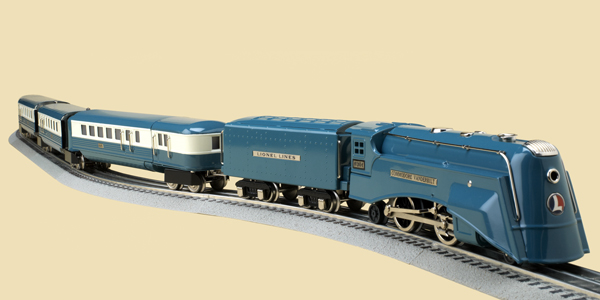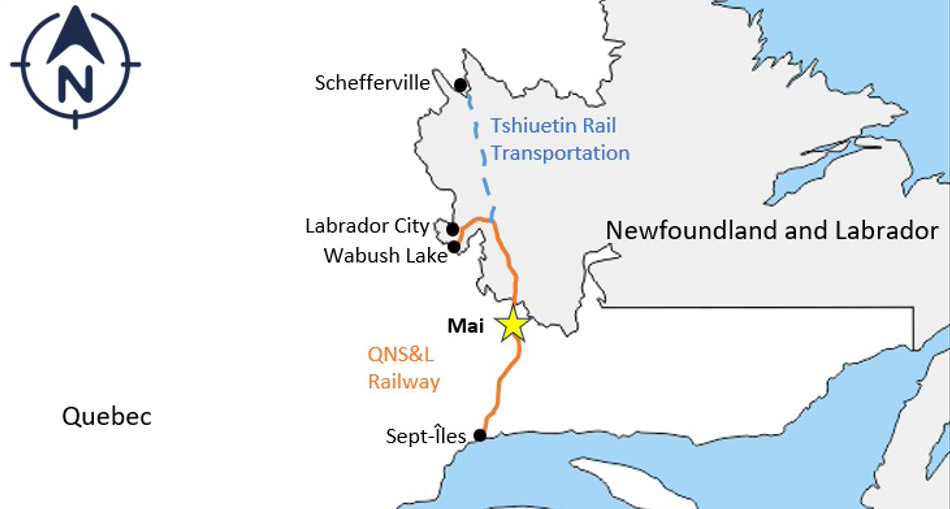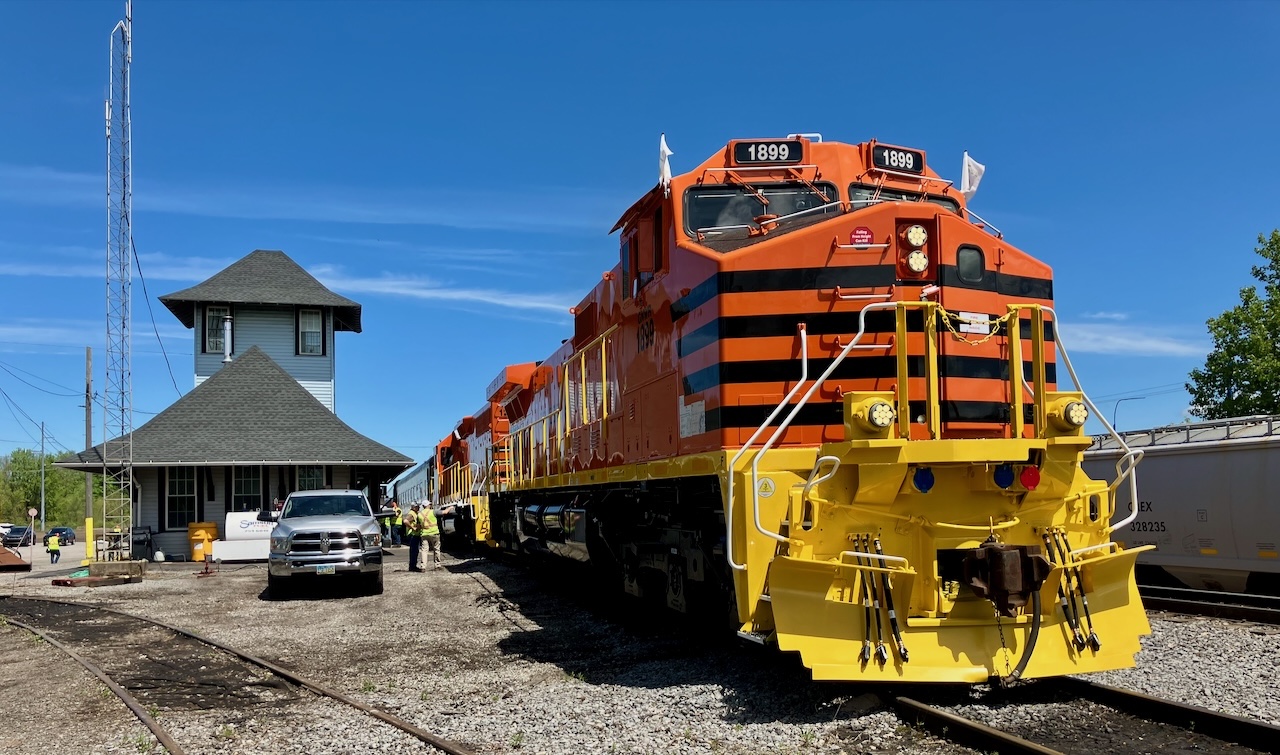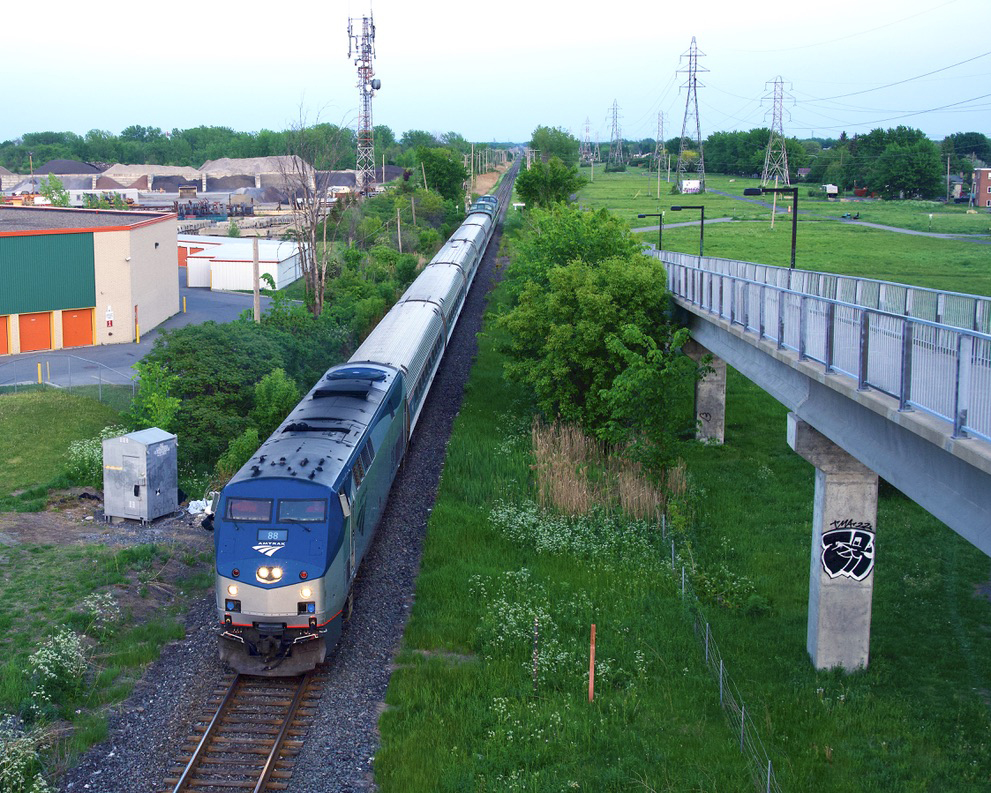To get the job done, Lionel used its no. 265E 2-4-2 Commodore Vanderbilt and mated it with the firm’s medium-priced articulated passenger car set featuring the nos. 617, 618, and 619 cars.
The Commodore Vanderbilt was a popular O gauge engine, and this set, the no. 295W, with its eye-popping blue and white paint scheme was sure to become a classic. The no. 295W was cataloged 1936-1937.
Opening the box
I had to smile when I opened the Lionel Corp. Tinplate box and considered the passenger car set and how it was to be pulled by a locomotive that, in my frame of reference, reminded me of a small Marx engine. But that notion proved to be off the mark. The fact that the Commodore Vanderbilt was stamped steel was about all the two had in common.
If you’re familiar with the Commodore Vanderbilt, you’ll immediately recognize the silhouette on the O gauge model. It looks ready for speed, like that kid in the old auto commercials that chattered, “Zoom, zoom, zoom.”
Clearly, the locomotive is a representation that suggests the prototype rather than an attempt to copy it detail for detail. But what it does offer is commendable.
Save perhaps for the slight bulge at the steam chests, the model gets the look of the Commodore Vanderbilt “bathtub” right. The headlight and airfoil on the front of the nose, the smokestack and raised domes on top, and the handrails for the running boards are great.
Added signage includes the Lionel circle-L logo (and its silver, blue, and orange colors still have hypnotizing effect), a placard with the name “Commodore Vanderbilt” on the flanks, and the number “No. 265-E” just below the cab windows.
The tender is a streamlined model clearly patterned after the original Vandy’s mate. The reproduction adds a wire tether between the locomotive and tender.
Of course, the locomotive is a 2-4-2, hardly possessing the majesty of the real thing’s 4-6-4 Hudson wheel arrangement, but hey, this is a train from the olden days (1935-40) where the target was kids, not kids wanting to re-capture the old times. But I suppose that if you’re taking a second look at a tinplate product, you probably aren’t a two-rail scale operator!
The passenger cars are a neat three-unit articulated car set. Okay, you ask “What’s an articulated car set?”
Simply put, the individual cars make something of a unit. Each car has a single truck mounted to it. The car is then connected to a vestibule that has a truck attached to it. Where a set of three conventional cars would have six trucks, this outfit makes do with four.
The origins of this system may have been to save a buck, but I like to think it was to enhance the snakelike image of this train rounding a curve. Maybe it’s just the three-rail romantic in me, but the articulation does add a cool visual element when this train’s a-rolling.
There are three cars – a coach/combine (part baggage car and coach), a full coach, and a rear observation car. The lead and rear cars have rounded end, but all the other ends are open. The vestibule section simulates the place where cars connect to and passengers to move through the train.
The cars are stamped steel with ribbing on the rooftops, and on the sides below the windows. The window lines are smooth. Each car has simulated stamped-in impressions for side doors, as well as add-on grab irons. There is an extra door and grab set on the baggage car door.
The windows are all frosted, and there is interior illumination provided by a light and power pickup on the vestibule section.
I found the blue and white scheme on the cars very attractive and it was very well executed on the metal shells.
On the test track
I’m not sure if I’ve ever used the word “spunky” in a product review. But that word kept popping up as this mighty midget gave all it had to keep the three-car set blazing along the line. I didn’t expect a great deal from the 2-4-2, but watching it dig into the rails and get the stamped-steel train set moving was a joy.
The motor was very responsive in both command and conventional modes.
Our conventional-mode low speed was 7.4 scale miles per hour, and the command-mode low speed was 4.4 scale miles per hour. The high-speed average was 61.1 scale miles per hour. You may be able to coax a bit more out of it, but this is pretty much the high end.
I debated whether or not to do a drawbar test, since it is unlikely anyone will add cars to this outfit. In case you’re curious, the drawbar pull is 1 pound, 2 ounces.
The sound package was the generic steam effects we’ve heard on previous tinplate products, and it does sound pretty nice. A switch lets you silence the effects, so you can experience the faint, almost Zen-like sound of metal machinery in action. This is almost as good as the regular sound package. Given a choice, I’ll still opt for running with the sound on.
The smoke unit generated a ton of the white stuff, and was best when operating at low speeds, which allows you to easily see the chuffs in sync with the sounds.
The lighting is located in the vestibule section. Even though it doesn’t penetrate 100 percent of the cars, it’s bright enough, especially with the train room lights off.
I enjoy the look and performance of prewar-style tinplate trains simply because of the fact that they aren’t trying to be scale-detailed models of a real train. Lionel Corp. Tinplate reproductions excel at capturing the spirit of a bygone era when model trains could be large, shiny, and the colors of the rainbow. The Blue Streak gets my nod of approval.
Features: O-31 operation, ProtoSound 2.0 operation, smoke unit
www.mthtrains.com















I had the luck to find one new in the box! just as advertised!
Great looking set! goes great along with my Baby Blue Comet 263E1
I now have the nicest color trains Lionel/ MTH ever made!